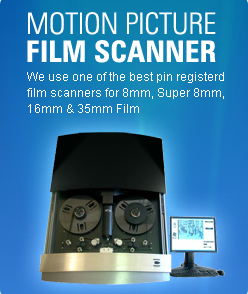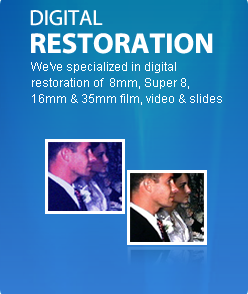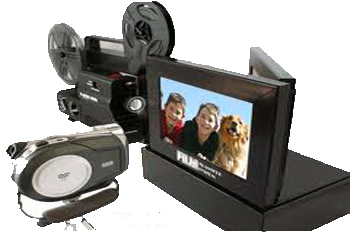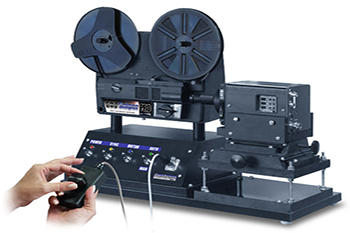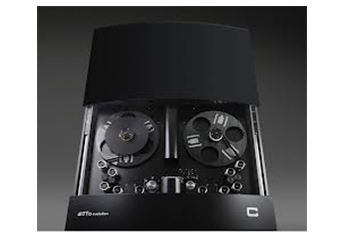
Film Conversion Equipment
Film Scanning and Film Transfer Equipment Types
The type of film scanning machine used for your 8mm, Super 8 or 16mm film conversion will have as much of an impact on the quality you receive as the resolution of the scan itself will. For example, if you wanted to digitize a photograph and tried doing it two different ways. You first put the photograph down on a table and took a picture of it using your smart phone or camera. Then you took the picture and scanned it using a flatbed scanner. If you compare the two side by side on your computer it will become really obvious that the flatbed scanner produced a digital image as good as the photograph. However, the picture you took with your phone or camera does not look close to the quality of the original photograph.
The same goes for scanning your 8mm, Super 8 or 16mm film. The real-time and frame by frame machines below are using a camcorder to take a picture of your film. The motion picture film scanner and Datacine machine are scanning the film. The results will be significantly different.
Film Conversion Equipment |
|
Real Time
|
|
Frame by Frame
|
|
Professional Film Scanners
|
|
Equally important as resolution is the type of film transfer. There are a few basic types of film transfer processes. More than 80% of the companies out there today use a real-time transfer. Any type of real-time film transfer will result in video that is 40-50% worse than the film’s current condition.
So, at this point you’ve learned that film transfers can capture at standard definition (480 lines), high definition (1080 lines) or 2K (1556 lines). You’ve also learned about the 3 different types of film transfers being used today. In order from least to best quality we have:
The film transfer processes above are the basics types and do not include any restoration by themselves. Restoration comes in many different capabilities from color and exposure correction, to grain elimination, to stabilization
Ann Arbor Fun Facts: The hometown of former President Gerald Ford, the city manages to exude Midwestern charm while claiming a strong economy based on a variety of industries, including printing and publishing, electronics and transportation equipment, medical equipment and technology. Domino's Pizza and Borders Books are based in the city. Ann Arbor is also an important medical center, home to a large pharmaceutical research facility and several high tech research and development firms. The city offers a great quality of life, ranking #10 on the BestJobsUsa.com list of the Best Places to Live and Work in America.
Michigan Fun Facts: The Mackinac Bridge, which connects Michigan’s upper peninsula to the rest of the state, spans five miles and is one of the world’s longest suspension bridges. Detroit, the state’s largest city, is the home of the American auto industry and is the birthplace of Motown Records. Michigan, the Wolverine State, joined the union in 1837. Located in the center of the Great Lakes, Michigan is divided into two land masses known as the Upper and Lower Peninsulas.
